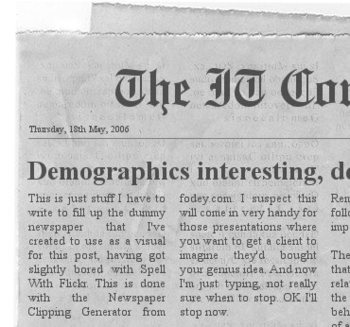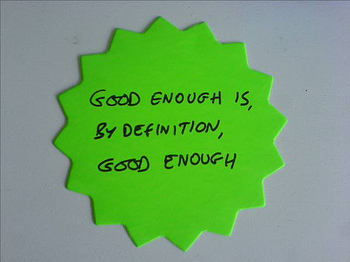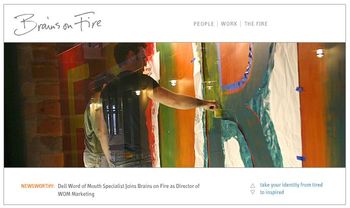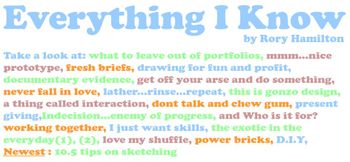
This report in Business Week about Crispin Porter reminded me of one of the hidden purposes of planning which we're never really supposed to talk about; the theatre of insight.
The problem with advertising (and a lot of creative businesses) for journalists and clients alike is that the story of the process just isn't that interesting. ('We all sat around and talked about it for a while and then some of the guys came up with quite a good idea and we noodled with it for a bit, argued about it for a bit and it turned into something good'). When a journalist turns up, or when you've got a pitch or something you want a more dramatic story to tell, something with a bit of tension,discovery and ideally some appearance of intellectual rigour. That's where planning comes in (or 'cognitive anthropology' in Crispin's case, I know, I know):
"Two-hour in-home
interviews with two dozen GTI buyers, all men 18 to 30, were done in
five cities. The researchers sent the subjects an assignment in advance
of visits: Make a collage with magazine pictures to illustrate how they
felt about Japanese "tuner" cars, like Honda Civics, on which owners tack thousands of dollars in speed-enhancing
and cosmetic accessories. Then cut out pictures representing the
European tuner cars like GTI and BMW M cars that are accessorized at
the German factories. One GTI fan contrasted cutouts of Tweety Bird and
a tuner "dude" wearing a chrome dollar-sign necklace to represent the
Asian tuner "posers" with images of a black wolf and Ninja warrior
depicting the "more authentic and serious" Euro tuner crowd.
Crispin's researchers then asked them to write epitaphs on paper
tombstones after the phrase "Here Lies the Japanese Hot Hatch," and
recipes that begin with, "My perfect recipe for driving is..." One
recipe reads: "One S-curve, a pinch of fishtail, two parts turbo toast,
an ounce of hard rock music. Combine and bring to a boil." The strategy
drawn from all this was to flog the GTI as tuned in Germany by
speed-happy engineers rather than at some U.S. neighborhood retail
joint."
It's a bit like the famous Goodby Got Milk research. It's not just great strategy, it's a great creation story. The drama of the story, the thrill of the chase, the excitement of the solution. Sure you could have got to the same place through common sense and a couple of hours around the big table, but that's not the point; planning is drama, planning is story, planning gives you something to talk about. Planning gives you that all time favourite pitch strategy - The Theatre Of Insight.
I'm not knocking this in any way. It's a valid use of the craft, I just think it's worth acknowledging that often what we're doing is looking for an interesting idea creation story, not neccesarily splitting the strategic atom.










